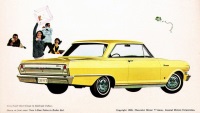The Mercury Cougar stands as a notable entry in the annals of American muscle cars, representing Mercury’s foray into the pony car market, dominated at the time by the likes of the Ford Mustang and the Chevrolet Camaro.
Introduced by the Mercury division of the Ford Motor Company, the Cougar was conceived as a more upscale and luxurious version of the Mustang, aiming to blend high performance with comfort and style. This article endeavors to explore the inception, design, performance, and legacy of the Mercury Cougar in detail.
Inception and Market Position
The Mercury Cougar was introduced in 1966 for the 1967 model year, at a time when the American automotive market was increasingly competitive, particularly in the segment of sporty, youth-oriented cars. Mercury’s strategy with the Cougar was to offer a vehicle that combined the sporty appeal of a pony car with the elegance and comfort typically associated with European grand touring cars. This approach was intended to appeal to a more mature and affluent demographic that desired both performance and luxury in their vehicles.
Design and Aesthetics
The 1967 Cougar’s design was distinguished by its long hood, short deck proportions, and a grille that featured hidden headlights, giving it a more sophisticated appearance compared to its counterparts. The car’s styling cues were intended to evoke a sense of luxury and refinement, setting it apart from the more utilitarian designs of other pony cars of the era.
The Cougar’s body was slightly larger than the Mustang’s, providing more interior space and a smoother ride. Its interior was notably upscale, featuring wood-grain detailing, plush seating, and a full array of gauges and controls designed to enhance the driving experience.
Performance and Specifications
Under the hood, the 1967 Cougar was offered with a range of engines, starting with a base 289 cubic inch (4.7-liter) V8, capable of producing up to 200 horsepower. For those seeking higher performance, Mercury offered an optional GT package, which included a more powerful 390 cubic inch (6.4-liter) V8 engine, producing 320 horsepower.
This engine allowed the Cougar to compete directly with the high-performance versions of its rivals. The car was available with either a 3-speed automatic or a 4-speed manual transmission, allowing drivers to choose the driving experience that best suited their preferences.
Legacy and Impact
The introduction of the Mercury Cougar in 1967 had a significant impact on the American automotive market. It successfully carved out a niche for itself as a luxury pony car, attracting buyers who were looking for something more sophisticated than the typical muscle car. The Cougar’s blend of performance, luxury, and distinctive styling helped to establish Mercury as a serious contender in the pony car segment. Over the years, the Cougar would undergo various redesigns and iterations, but the 1967 model remains one of the most iconic and beloved by collectors and enthusiasts.
The 1967 Mercury Cougar is remembered not just as a product of its time but as a vehicle that encapsulated the aspirations of a generation. It represented the perfect blend of American muscle, European-inspired luxury, and innovative design. As such, the Cougar occupies a special place in the history of American automobiles, embodying the spirit of innovation and luxury that defined the era.






